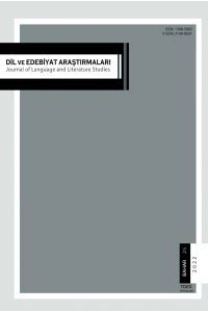Gilly Salmon'un Beş Aşamalı Modelinin Karma Derslerin Tasarımına Uygulanması
Applying Gilly Salmon’s Five Stage Model For Designing Blended Courses
___
- Bilgin, H. (2009). Students’ CALLing: Blended language learning for students. London: Spring Gardens.
- Bonk, C.J., & Graham, C.R. (2006). The handbook of blended learning environments: Global perspectives, local designs. San Francisco: Jossey‐Bass/Pfeiffer.
- Driscoll, M. (2003). Blended Learning: Let’s get Beyond the Hype. IBM Global Services // available online at http://www‐ 07.ibm.com/services/pdf/blended_learning.pdf
- Friesen, N. (2011). The Place of the Classroom and the Space of the Screen: Relational Pedagogy and Internet Technology. New York: Peter Lang.
- Friesen, N. (2012). Report: Defining Blended Learning // available online at http://learningspaces.org/papers/Defining_Blended_Learning_NF.pdf
- Garrison, D., & Vaughan, N. (2008). Blended learning in higher education: Framework, principles, and guidelines. San Francisco, CA: John Wiley & Sons.
- Graham, C.R. (2006). Blended learning systems: Definition, current trends, and future directions.
- King, S. E., & Arnold, K. C. (2010). Blended Learning Environments in Higher Education: A Case Study of How Professors Make it Happen. Mill A. C. (2000). Creating Web-based, multimedia and interactive course for distance learning // CIN: Computers, Informatics, Nursing.
- Salmon G. (2002). E-tivities: The Key to Active Online Learning. London; Sterling, VA: Kogan Page Limited.
- Stalker, H., & Horn, M. B. (2012). Classifying K–12 blended learning. Mountain View, CA: Innosight Institute, Inc//available online at http://www.innosightinstitute.org/innosight/wp‐content/uploads/2012/05/Classifying‐K‐12‐blended‐learning2.pdf
- Sternberg R. J. (1999). Intelligence as developing expertise // Contemporary Educational Psychology.
- Vaughan, N. (2007). Perspectives on blended learning in higher education. International Journal on E-Learning.
- ISSN: 1308-5069
- Yayın Aralığı: 2
- Başlangıç: 2010
- Yayıncı: TÜRKİYE DİL VE EDEBİYAT DERNEĞİ
Applying Gilly Salmon’s Five Stage Model For Designing Blended Courses
Gilly Salmon'un Beş Aşamalı Modelinin Karma Derslerin Tasarımına Uygulanması
Paul H. Fry, Edebiyat Kuramı Üzerine Genel Bir Bakış
Hayvan Sevgisini Öne Çıkaran İki Eser: “Yenilmeyen” ve “Gamsızın Ölümü”
Yunanperest Çılgınlık ve Helenseverlik
Çeviri: Yunanperest Çılgınlık ve Helenseverlik
Mavi Anadoluculuk ve Sabahattin Eyüboğlu’na Eleştirel Bakışlar
“Gobu”Stan’ın Gizemi (Kıpçaklar’a Giden Yol) Kitabı Hakkında
